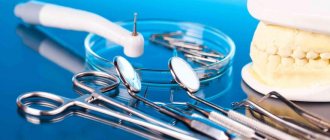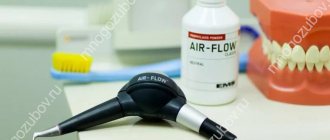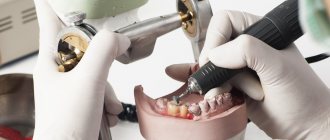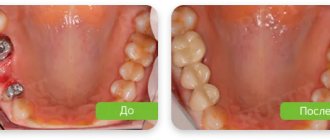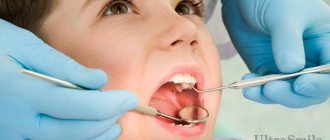More and more patients are turning to the dentist to restore all their teeth, or one jaw completely. Conventional removable dentures, partial dentures and extended metal-ceramic bridges do not meet the high requirements for comfort, aesthetics and durability. All of these goals can be achieved with dental implants.
The technique of jaw implantation in the absence of teeth is significantly different from implantation in the absence of only a few teeth. For example, it is an obvious fact that you do not need to install 32 implants to restore all your teeth. All the details of full dental implantation are outlined in this article.
Methods of prosthetics on implants in the absence of teeth
Prosthetics on implants in the absence of teeth can be divided into 3 types: removable, fixed and conditionally removable.
Removable prosthetics on implants is suitable for those patients who have already used a removable denture, but could not get used to it. Any option of removable prosthetics on implants will greatly improve the quality of life of such patients.
However, if you have never used a removable denture, then psychologically it will not be easy to get used to such a design. In this case, the best option would be fixed or conditionally removable prosthetics on implants. Conditionally removable means that the prosthesis is fixed with screws. It can only be removed by a dentist; the patient uses it as if he were his own teeth.
Implantation of both jaws with simultaneous loading with plastic crowns
More details about each treatment method are described later in this article.
Methods for restoring tooth enamel
The essence of the main methods for restoring tooth enamel comes down to filling damaged areas with special materials.
| Recovery method | What is |
| Remineralization | In order to compensate for the lack of mineral substances, fluoridation of teeth with fluoride-containing varnish or gel is used. Thanks to the use of these products, the enamel becomes stronger and becomes resistant to adverse external factors. |
| Special substances | As a result of treating damaged areas of enamel with amorphous calcium phosphate, the tooth surface becomes smooth and compacted, the sensitivity of the enamel decreases, and aesthetic imperfections disappear. This method has a fairly long-lasting effect. |
| Filling materials | By gradually applying thin layers of filling materials, damaged enamel is restored. This method is necessary, first of all, to restore the aesthetic function of the front teeth and allows the results to be maintained for a long time. |
| Implantation | This method is used when it is necessary to restore large areas of tooth enamel with very severe damage. Using a special material similar in composition and properties to tooth tissue, enamel is built up and restored at the molecular level. |
| Home Remedies | Effective only at the initial stage of destruction. Using toothpastes high in fluoride and other minerals. While brushing your teeth, you should leave the paste on your teeth for a while. In addition, regular massage of the gums, which increases blood circulation and ensures the flow of nutrients, will help prevent the destruction of enamel. And of course, a balanced diet with foods high in calcium and vitamin D, which will help calcium to be better absorbed. |
Lower jaw implantation
The lower jaw is denser in structure than the upper jaw, so in most cases, 2 to 6 implants are enough to restore all teeth. The integration period for implants in the lower jaw is 3 months.
Removable prosthetics on implants in the lower jaw are carried out on 2-4 implants. The most common option is to install 4 implants with spherical attachments (or locators). The advantages of this method are good fixation of the prosthesis, easy oral hygiene, simplicity of design, and, as a result, its low cost. A removable prosthesis on 2 implants with attachments is used in cases where there is not enough bone tissue to install 4; the fixation of the prosthesis in this case is worse. The disadvantages of this treatment method are that the prosthesis distributes the load not only on the implants, but also on the gums. Under the pressure of the prosthesis, the gums atrophy, so it is necessary to reline the prosthesis on average once a year. The fastening on the attachments also weakens; it is necessary to periodically replace the retention matrices. The service life of the prosthesis itself is about 5 years.
Removable denture on 4 implants with spherical attachments on the lower jaw
The second option for a removable prosthesis on the lower jaw is prosthetics of the lower jaw on a beam on 4 implants. In this case, the load is distributed mainly on the implants and much less on the gums. The fixation of the prosthesis is very tight, the prosthesis feels almost like your own teeth. The prosthesis itself is made of plastic. It completely restores aesthetics and chewing function. The fact that the denture is removable simplifies oral hygiene. A plastic prosthesis is not as rigid as a metal-ceramic or zirconium one, so it is easier for people who have problems with the temporomandibular joint to get used to it. The disadvantage of this treatment method is that a properly manufactured beam prosthesis is comparable in cost to a fixed structure.
One of the main conditions for the long-term functioning of such a prosthesis is that the beam connecting the implants must be very accurately connected to them. For this, multi-unit abutments are used, which ensure precise connection of the implant with the beam; the beam itself must be made on a milling machine. Unfortunately, patients are often offered a bar prosthesis made without multi-unit abutments, or made by casting rather than milling. In this case, the beam will be fixed to the implants with tension, which will lead to a negative result, possibly even to the loss of the implants due to their overload.
Removable denture on a beam fixation on the lower jaw
Fixed prosthetics of the lower jaw are performed on 6 implants with classical implantation. It is also possible to restore teeth on 4 implants using the all-on-4 method, in which case 2 of the 4 implants are placed at an angle of up to 45 degrees. The technique has its pros and cons. All-on-4 will be written about later in this article.
Fixed prosthetics completely imitate your own teeth and are the easiest to tolerate psychologically. During the period of implant integration, the patient uses a temporary removable prosthesis, or dental implantation is carried out with a simultaneous load using a fixed plastic prosthesis. The service life of a plastic prosthesis is 1 year. It can be replaced with metal-ceramic or zirconium after the implants have completely healed. On the lower jaw after 3 months. The implants themselves are not affected.
In the case when a permanent prosthesis is made with screw fixation, we are talking about conditionally removable prosthetics on implants. Conditionally removable means that the prosthesis can only be removed by a dentist. The patient cannot remove it on his own; it feels and functions like his own teeth.
The advantages of screw fixation are that the prosthesis can be removed if necessary. Unlike cemented dentures, which cannot be removed without sawing them. However, the complexity of the design, and as a consequence the cost, is increasing.
Fixed denture on the upper jaw on 6 implants, on the lower jaw on 6 implants
Advantages and disadvantages of the technique
Pros:
- time saving: the procedure takes 15-20 minutes,
- painlessness, absence of fear and psychological discomfort in the patient during the procedure,
- the ability to do without drilling with a bur and installing a filling when treating initial caries,
- elimination of sensitivity of hard tissues,
- the formation of new areas of smooth and shiny enamel of a natural shade without stains or damage,
- naturalness and safety,
- no contraindications or age restrictions: the method is suitable for children and adults, pregnant and lactating women.
The result lasts from 9 months to 3 years
Minuses:
- you have to wait a long time for the final result: at least 1 month,
- The method will not improve the situation in case of severe tooth decay.
“The doctor recommended enamel implantation when he discovered a wedge-shaped defect in me. Several months have passed since then and I can say the following: previously the damaged area reacted sharply if I touched it with a brush when cleaning, but now this sensitivity has passed. The spot of the wedge-shaped defect itself has not completely disappeared, but it has decreased in size, which is also quite good!”
Arina, review from the dental portal gidpozubam.ru
Upper jaw implantation
The bone tissue of the upper jaw is less dense than that of the lower jaw, therefore, for complete prosthetics on implants in the upper jaw, more implants are needed - from 4 to 8. Healing of implants in the upper jaw occurs within 6 months.
Removable prosthetics of the upper jaw are performed on 4-6 implants. On 4 implants it is possible to install an overdenture with spherical attachments. The overdenture has the same boundaries as a regular removable one; it completely covers the palate. To make a prosthesis on the upper jaw without a palate, you need to install 6 implants. Ball-shaped attachments, locators or a beam can be used as connecting elements. The best fixation of the prosthesis is achieved on a beam. However, the cost of such a prosthesis is comparable to a fixed structure.
For fixed prosthetics of the upper jaw, it is necessary to install from 6 to 8 implants. It is also possible to install a fixed denture on the upper jaw on 4 implants using the all-on-4 technique. It will be written about later in this article.
Installing 6-8 implants in the classical way is the most studied and reliable option for implanting the upper jaw. The number of implants is determined by the presence of bone tissue and the shape of the upper jaw. While the implants are healing, the patient uses a temporary removable prosthesis, or implantation is carried out with a simultaneous load using a fixed plastic prosthesis.
The service life of a plastic prosthesis is 1 year. It can be replaced with metal-ceramic or zirconium after the implants have completely healed. On the upper jaw after 6 months. The implants themselves are not affected.
Just like in the lower jaw, in the upper jaw it is possible to make a permanent screw-retained structure - conditionally removable prosthetics. Only a dentist can remove a screw-retained prosthesis. The patient uses it as if he were his own teeth.
The advantages of screw fixation are that the prosthesis can be removed if necessary. Unlike cemented dentures, which cannot be removed without sawing them. However, the complexity of the design, and as a consequence the cost, is increasing.
Different implantation options for complete absence of teeth. 8 implants on the lower jaw, 6 implants on each jaw, 8 implants on the upper jaw
All-on-4
The All-on-4 technique (all-on-four) was developed by Nobel Biocare. It involves the installation of 4 implants on one jaw with simultaneous loading with a fixed prosthesis on a screw fixation. The 2 outermost implants are placed at an angle of up to 45 degrees, which allows you to bypass anatomically difficult places: the maxillary sinuses in the upper jaw and the nerve exit site in the lower jaw.
Initially, the All-on-4 technique was positioned as minimally invasive, without bone grafting. However, for successful functioning it is necessary to install sufficiently long implants, because 4 implants must bear the load of the entire dentition. Unfortunately, not all patients have the required alveolar ridge height. Installing shorter implants may result in one of the implants not taking root due to increased load. And then everything-on-four will turn into nothing-on-three. This is why patients are offered “all-on-4 modifications”, for example All-on-6 (all-on-six implants), because Installing an additional 2 implants significantly reduces the risks.
3-6 months after implantation using the All-on-4 method, gaps appear between the prosthesis and the gum, because This is why gum remodeling occurs after implantation. It is necessary to either reline the existing prosthesis or replace it with a permanent one - metal-ceramic or zirconium.
Cost of treatment
Dental enamel implantation in dentistry has a low cost - from 2,400 rubles for the treatment of several teeth. If you want to purchase InnoDent De-Senz for home use, you will have to spend about 6,000 rubles on it, but it will be enough to treat the entire oral cavity.
Notice
: Undefined variable: post_id in
/home/c/ch75405/public_html/wp-content/themes/UltraSmile/single-item.php
on line
45 Notice
: Undefined variable: full in
/home/c/ch75405/public_html/wp-content /themes/UltraSmile/single-item.php
on line
46
Rate this article:
( 2 ratings, average: 5.00 out of 5)
implantation
- According to the official website of the manufacturer innodent.net
Expert “The technology has been on the dental services market for quite a few years, there is not a lot of information, scientifically based data and reviews about it, not all clinics in Russia offer it, so it is still difficult to objectively say how effective and safe it really is. I think time will tell whether she will be able to win the trust of specialists and patients.” Dentist therapist, periodontist Marina Igorevna Tarabanovskaya
Consulting specialist
Vagapov Zakir Irkinovich
Doctor rating: 7 out of 10 (3) Specialization: Orthodontist Experience: 16 years
Bone grafting for jaw implantation
The more implants are installed, the greater the likelihood that the existing bone tissue will not be enough to install implants and it will be necessary to build it up. Bone deficiency can be in thickness (very thin bone) or in height (close to the maxillary sinuses in the upper jaw, nerve in the lower jaw).
If there is a slight lack of bone tissue in thickness, one-step bone grafting with the installation of implants is possible. It is also possible to carry out a sinus lift (a type of bone tissue augmentation when the distance to the maxillary sinus is insufficient) with the one-step installation of implants.
If there is a large deficiency of bone tissue, operations are first performed to build it up (open sinus lift, harvesting and replanting of a bone block), and after 3-6 months, implantation is performed. In this case, the total duration of treatment can be from one to one and a half years.
Possible complications
One of the most serious consequences of medical intervention is the rejection of material implanted into bone tissue. The screw is rejected when the patient’s immune status is elevated and allergic reactions occur. Fortunately, this phenomenon is rare.
Often the gums respond with an inflammatory process to a foreign object, pain, swelling, and redness appear. In severe cases, surgical removal of the pin cannot be avoided. After this, rinsing and disinfection are performed, and a course of antibacterial and anti-inflammatory drugs is prescribed.
If the doctor does not follow the rules of asepsis, pathogenic microorganisms may enter the wound. As a result, acute infections develop, which are accompanied by dangerous symptoms, including suppuration. Also, treatment can be complicated by otitis media, neuritis of the facial nerve, and abscess. In such situations, intragingival injections and antimicrobial therapy using a dropper are indicated.
The procedure for installing dental implants, placement and treatment methods depend on the clinical picture, the degree of damage to the dentition, the presence of contraindications, financial capabilities, the age of the patients and other factors. The older a person is, the higher the likelihood of encountering such a problem. Many people are afraid that a smile looks unattractive to their interlocutors, although the real danger from missing elements in a row is more serious complications.
How to avoid bone grafting?
There are proven methods that allow you to reliably restore teeth on one or both jaws without additional operations to build bone tissue.
First of all, it’s worth talking about the positions in which implants are installed. Humans have a total of 32 teeth, 16 teeth on each jaw. The 2 outer teeth are wisdom teeth; they do not bear a functional load, therefore they are not restored during prosthetics. Of the remaining 14 teeth (7 on each side), the most problematic in terms of restoration are the sixth and seventh teeth (counting from the center). They are located close to the maxillary sinus in the upper jaw and to the nerve in the lower jaw. It is precisely to restore the sixth and seventh teeth that lengthy osteoplastic operations are necessary.
According to the recommendations of the international association of implantologists ITI - International Team for Implantology , in the case of complete absence of teeth, it is necessary to restore the dentition up to the sixth tooth inclusive (12 teeth on each jaw). This method completely restores both the function of the jaw and the aesthetics of the smile. At the same time, additional risks associated with the close location of anatomically important formations (maxillary sinuses and nerve) are avoided.
In this case, the implants are installed in the anterior part of the jaw, and the outer ones in the area of the fifth teeth (the so-called Frankfurt University protocol ). Subsequently, a one-piece fixed prosthesis is installed on them. Combining all implants into a single structure compensates for lateral chewing loads and ensures full functioning of the entire jaw with only 6 implants in the lower jaw and 6-8 in the upper jaw.
Another problem is a deficiency of bone tissue thickness ( thin bone ). To avoid bone grafting in this case, it is possible to use thin implants. However, not all systems guarantee that their thin implants can withstand the load of full jaw prosthetics. Such guarantees are provided by German implants Ankylos , and the Straumann has developed a special alloy of titanium and zirconium, which allows thin implants to function without building up bone tissue, it is called Straumann Roxolid .
And lastly, if there is a deficiency of bone tissue both in height and width, a possible solution is to install short and thin implants, but in larger quantities. Instead of 6 standard ones - 8 short ones. The total length of the implants in this case will be equal.
Why you should get veneers
Implantation of enamel coating can eliminate functional and cosmetic defects and give a person a charming Hollywood smile.
The advantages of installing ceramic plates are undeniable:
- reliable protection. With minimal grinding, teeth receive a wear-resistant and durable protective coating;
- invulnerable aesthetics. The thinnest plates fully reproduce natural enamel due to the increased light conductivity of the material;
- versatility. An extensive color palette makes it possible to choose a shade that is in no way different from the color of neighboring healthy teeth;
- quick effect. You can get a dazzling smile in a couple of visits to the dentist, bypassing long-term wearing of braces and other painful procedures;
- durability. If the rules of care for structures are followed, they retain their original appearance for up to 15 years or more.
The specialists of our clinic in St. Petersburg install veneers with a quality guarantee. Regardless of congenital or acquired defects that need to be eliminated, doctors guarantee success in the most difficult situations.
Which implants to choose?
Today there are more than 3,000 implant systems in the world. However, not all of them can boast a long history of observations and clinical trials around the world. There are also some implant systems that, despite their reliability, are not very common in Russia. This may lead to difficulties in terms of delivery of original components of implant systems.
It is worth choosing only generally recognized implant systems, which are used by different doctors independent of each other. Otherwise, the patient risks finding himself in a situation where no one can help him.
An important point when choosing an implant system is the type of implant-abutment connection. It determines how long the implant will last. The most reliable today is the conical implant-abutment connection with the effect of switching platforms. It is able to withstand greater loads compared to a flat connection, is leak-tight and does not cause resorption of bone tissue around the implant.
The healing of implants is affected by the purity of the titanium from which they are made. The most common is Grade 4 - commercially pure titanium. Grade 1,2,3 alloys are even purer. Grade 5 – less pure, contains impurities of vanadium and aluminum.
The surface of each implant is a unique patented technology, because... It is on the surface of the implant that osseointegration occurs—the fusion of the implant with the bone tissue. Serious implant manufacturing companies conduct a lot of research, proving that their implants are integrated not only in standard situations, but also, for example, in people suffering from diabetes or bleeding disorders. The following systems meet all these requirements: Straumann (Switzerland), Ankylos (Germany), Astra tech (Sweden), Nobel biocare (USA/Sweden). Among the inexpensive systems, we can highlight Osstem implants (South Korea). They have proven themselves throughout the world as a reliable and economical implant system.
How much does implantation cost if there are no teeth?
Despite the apparent high cost of implantation in the absence of teeth, it may turn out to be more profitable than restoring already hopeless teeth. In addition, the service life of implants is unlimited. Treatment is carried out in stages and is also paid for.
So, the price of jaw implantation in the absence of teeth depends on the type of structure (removable, fixed) and the implant system. For example, the cost of jaw implantation using the classical method with a one-time load with a non-removable plastic prosthesis ranges from 350,000 rubles. The price of a zirconium prosthesis on implants for one jaw starts from 200,000 rubles.
You can get acquainted with the prices for implantation in the absence of teeth by clicking on this link.
Author of the article: Akhtanin Alexander Alexandrovich. Dentist-implantologist, orthopedist. He trained for a long time in Berlin, Germany. Member of the international association of implantologists ITI - International Team for Implantology.



